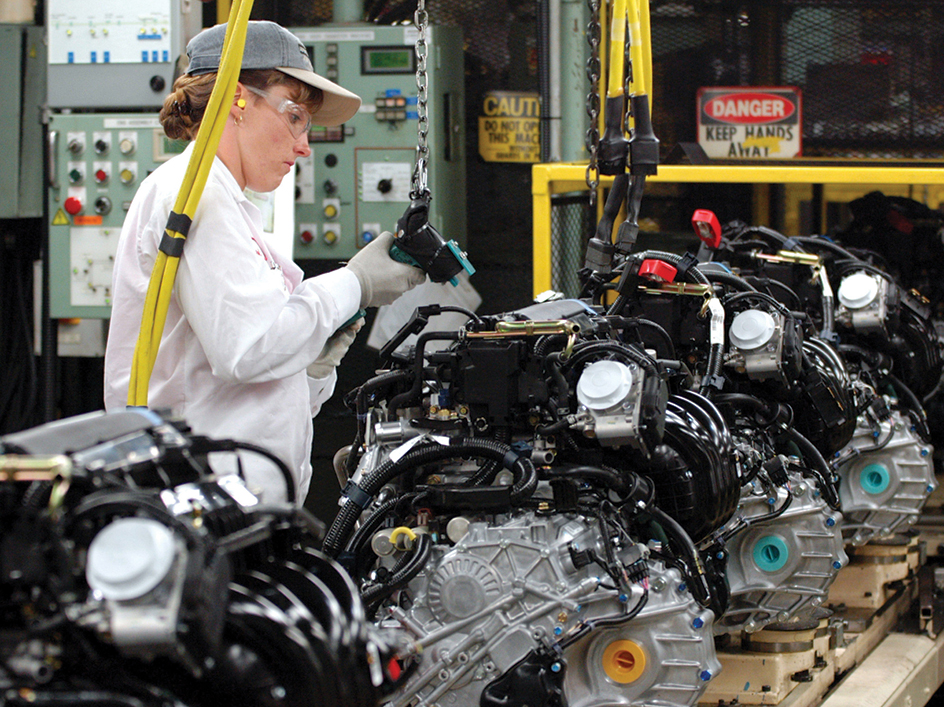Assembly line is a manufacturing method that divides production into separate tasks, turning out large quantities of goods at low prices. Workers repeatedly perform a single step in an assembly process, such as inserting, tightening, or inspecting a part. Assembly lines reflect the principle of division of labor, which breaks up complex manufacturing jobs into smaller, specialized tasks.

Before assembly lines, skilled workers made items and parts by hand. No two finished products were exactly alike. The 1800’s brought the development of identical, interchangeable parts. Standardizing the parts of manufactured items was a key step toward assembly-line production. Henry Ford, an American automobile manufacturer, helped popularize assembly lines in the early 1900’s. He refined the use of conveyor belts to carry parts between workstations. New cars rolled out of Ford’s factory every few minutes.
Assembly lines allowed unskilled workers to quickly learn and perform jobs. Efficient manufacturing made complex products cheap and raised living standards. But some workers complained about constantly having to repeat the same motions. Modern assembly lines often involve the use of industrial robots.
